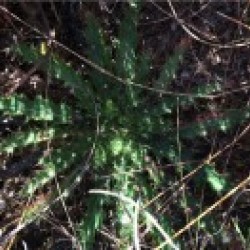Patricio Ansaldi
University of California at Santa Barbara

Developing genetically appropriate seed mixes of vulnerable plant species for restoration (2015)
Ecology, Genetics, GIS, Population Biology, Reproductive Biology
Question
How does the genetic diversity of Cirsium hillii populations differ between gravel hill and sandy prairies?
Background
Hills thistle, Cirsium hillii, is a vulnerable perennial thistle that is endemic to a variety of coarse soil types throughout the Midwest and flowers after 3-5 years of vegetative growth. Known as a habitat specialist, this species most often resides on gravel hill and sandy prairies. In addition to typically occurring in small populations, these plants reproduce asexually as well as sexually, which often results in many cloned individuals. Even during sexual reproduction, the seed set is characteristically low at less than 40%; and in situations where self-pollination occurred, the frequency of viable seeds is less than 10%. It is consequently hypothesized that this species suffers from low genetic diversity and inbreeding, which may explain the low reproductive success it experiences.
Some populations are comprised of multiple small and cloned basal rosettes, while others are comprised of larger individuals with numerous reproductively active flowering stems. The extent to which plants undergo each type of growth may depend on their habitat and thus accompanying soil type, creating various ecologically-influenced phenotypes or “ecotypes” within the species. Therefore, I plan to identify patterns of genetic diversity among the individuals on gravel hill and sandy prairies, as well as determine the extent to which this species relies on clonal propagation within these populations. This research will further our understanding of this species and its development and will hopefully elucidate ways of improving reproductive success so it can be included in future restoration seed mixes.
